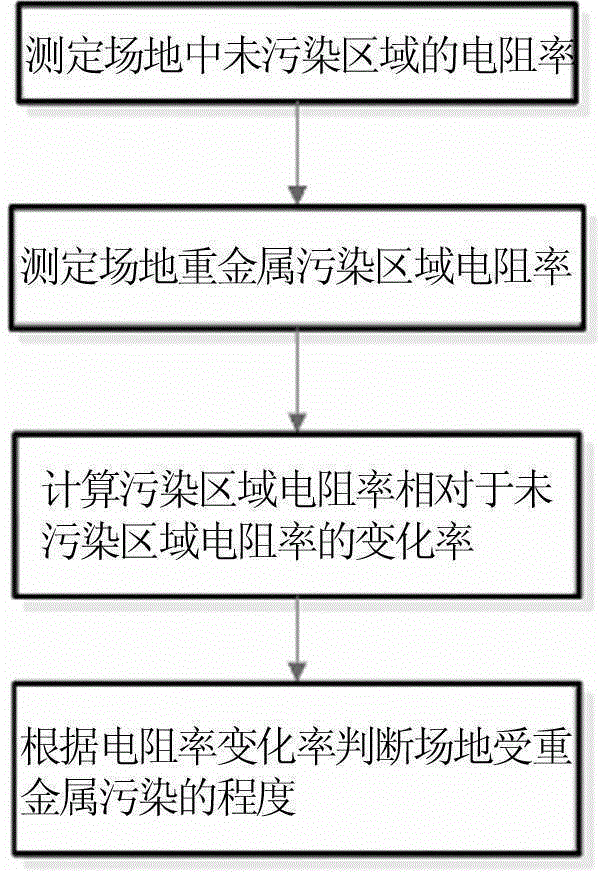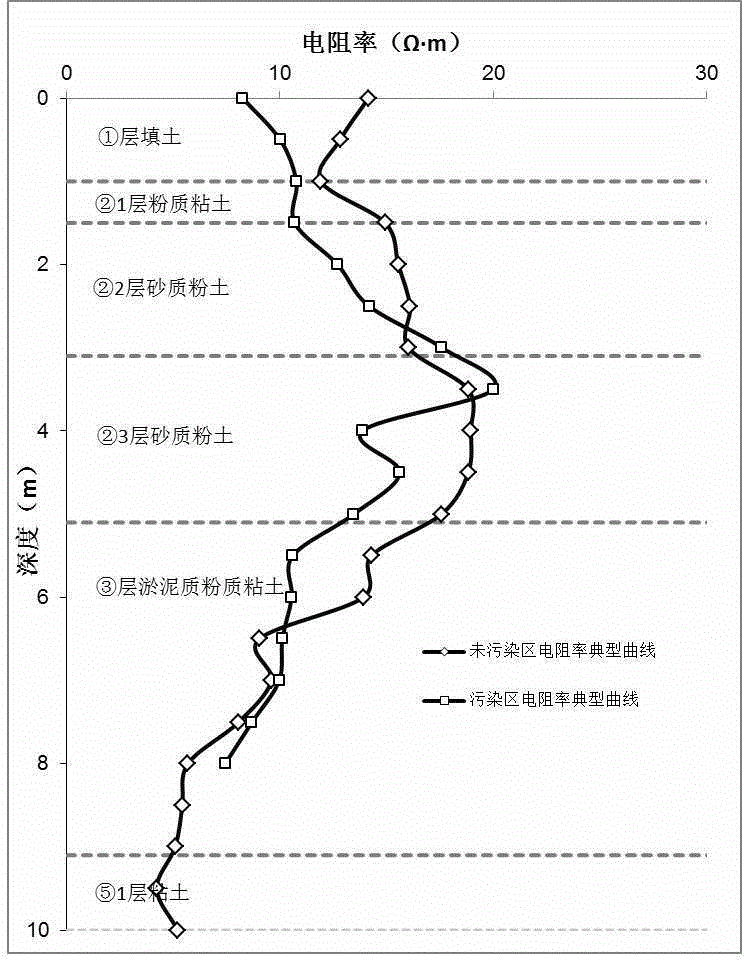Method for judging pollution level of heavy metal polluted site by applying change rate of electrical resistivity
A pollution degree, resistivity technology, applied in the direction of material resistance, etc., can solve the problem of less research on related relationships, and achieve the effect of saving time and cost
- Summary
- Abstract
- Description
- Claims
- Application Information
AI Technical Summary
Problems solved by technology
Method used
Image
Examples
Embodiment 1
[0020] Embodiment 1: as figure 1 As shown, this embodiment specifically relates to a method for judging the pollution degree of heavy metal-contaminated sites by using the rate of change of resistivity. Since the resistivity method has an obvious response to the measurement of heavy metal-contaminated soil, the heavy metal concentration and resistivity value under the same conditions can be achieved. Quantification, so the degree of soil pollution by heavy metals can be judged by the change rate of resistivity, which specifically includes the following steps:
[0021] (1) Summarize the data and on-site exploration of heavy metal-contaminated sites, preliminarily determine the potential polluted areas in the site, and select an unpolluted area near the heavy metal-contaminated site;
[0022] (2) Measure the resistivity of the soil at different depths in the uncontaminated area. The resistivity test results are as follows: image 3 , then take the average value of the resistivi...
Embodiment 2
[0035] Embodiment 2: as figure 1 As shown, this embodiment specifically relates to a method for judging the pollution degree of a heavy metal-contaminated site by using the resistivity change rate, which specifically includes the following steps:
[0036] (1) Using the indoor test method, select representative soil samples and measure their natural state resistivity;
[0037] (2) Select Cu 2+ For representative heavy metal pollutants, copper chloride solution was used to prepare uncontaminated soil samples, soil samples with standard values, 1 times exceeding the standard, 2 times exceeding the standard, 6 times exceeding the standard, and 10 times, 50 times the contaminated soil samples, such as Figure 5 shown;
[0038] The preparation method is: take 500g of sieved uncontaminated soil each time, prepare a solution containing heavy metal ions according to the moisture content of 30±2% and the set concentration gradient, pour it into the soil sample, stir evenly, put it in...
PUM
 Login to View More
Login to View More Abstract
Description
Claims
Application Information
 Login to View More
Login to View More - Generate Ideas
- Intellectual Property
- Life Sciences
- Materials
- Tech Scout
- Unparalleled Data Quality
- Higher Quality Content
- 60% Fewer Hallucinations
Browse by: Latest US Patents, China's latest patents, Technical Efficacy Thesaurus, Application Domain, Technology Topic, Popular Technical Reports.
© 2025 PatSnap. All rights reserved.Legal|Privacy policy|Modern Slavery Act Transparency Statement|Sitemap|About US| Contact US: help@patsnap.com



